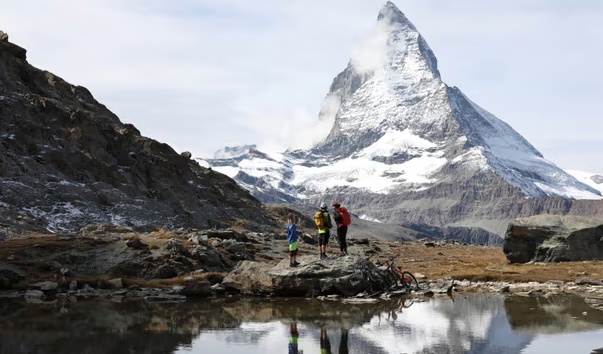Italy and Switzerland are set to redraw part of their shared border due to the rapid melting of glaciers. On Friday, the Swiss Federal Council approved an agreement that will lead to the map change.
Italy is currently in the process of finalising the border adjustment, once signed, the changes will be ratified. The common border runs along Alpine peaks, but melting glaciers have caused the historically defined border to shift. This is because in some places the alpine boundary is defined by watersheds or ridge lines of glaciers, but as they shrink they can move, shifting the boundary along with them.
The new changes will be implemented below the Matterhorn, one of Europe’s highest mountains, around the Tete Grise, Plateau Rosa, Cabane Carrel and Dos de Rollin in southern Switzerland and north-west Italy.
Until Italy approves the agreement, Swiss federal authorities have said specific border changes will not be made public.
In the past, however, such changes have resulted in 100-150 metres of border movement in the past. The Swiss government said:
In the high mountains, significant sections of the Italian-Swiss border are determined by the watershed, represented by the crest line of glaciers, snowfields and perpetual snow. However, with the melting of the glaciers, these natural elements evolve and redefine the national border when it is defined dynamically.
Of the 359 miles (578 kilometres) of the Italian-Swiss border, 25 miles (40 kilometres) are covered by glaciers.
Swiss glaciers continue to melt rapidly. In 2023, they lost 4 per cent of their volume. In 2022, they shrank 6 per cent. Scientists have stopped measuring the size of the ice on some Swiss peaks because there is no ice left at all.
Marmolada glaciers in an “irreversible coma”
European glaciers are melting faster than on other continents. According to the Copernicus service, they have lost 10 per cent in the last two years, and by 2050 the ice cover will be halved, even if warming does not exceed the 2°C mark.
Earlier, it became known that the Marmolada glacier, the largest glacier in the Dolomite Alps (Italy), may disappear completely by 2040 due to rising average temperatures. Over the past five years, the glacier has shrunk by 70 hectares, the equivalent of 98 football fields. And since the beginning of measurements in 1888, the glacier has retreated by 1.2 thousand metres. Now experts call the state of the glacier “irreversible coma.” This glacier is considered a symbol of the region, and it has been measured annually since 1902 as an indicator of climate change.
